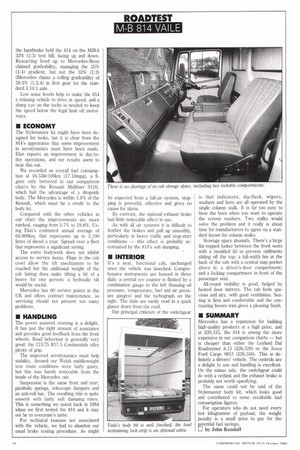• INTERIOR
Page 30

If you've noticed an error in this article please click here to report it so we can fix it.
It's a neat, functional cab, unchanged since the vehicle was launched. Comprehensive instruments are housed in three dials: a central rev counter is flanked by a combination gauge to the left (housing oil pressure, temperature, fuel and air pressure gauges) and the tachograph on the right. The dials are easily read in a quick glance down from the road.
Our principal criticism of the switchgear is that indicators, dip/flash, wipers, washers and horn are all operated by the single column stalk. It is far too easy to blow the horn when you want to operate the screen washers. Two stalks would solve the problem and it really is about time for manufacturers to agree on a standard layout for column stalks.
Stowage space abounds. There's a large flat-topped locker between the front seats with a moulded lid to prevent oddments sliding off the top; a full-width bin at the back of the cab with a central map pocket above it; a driver's-door compartment; and a locking compartment in front of the passenger seat.
All-round visibility is good, helped by heated door mirrors. The cab feels spacious and airy, with good ventilation. Seating is firm and comfortable and the contrasting brown trim gives a pleasing finish.
































































































